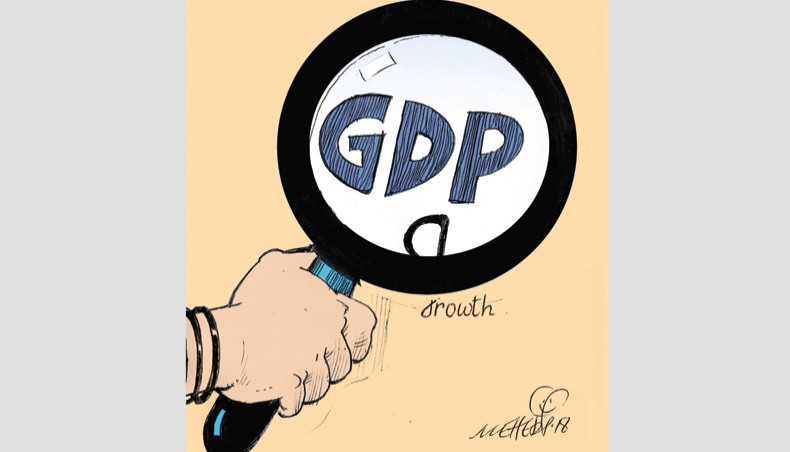BBS in its provisional estimate in April said that economic growth of the country would be 7.65 per cent in FY18 against the government’s target of 7.4 per cent for the fiscal year.
Experts and economists, however, expressed scepticism about the higher economic growth calculated by BBS for the fiscal year, saying that the growth was not consistent with the performance of other economic indicators.
Growth in private sector investment, private sector credit flow, exports and job creation was not high enough to support 7.86 per cent growth in the year, they said.
Planning minister AHM Mustafa Kamal on Tuesday disclosed the revised GDP calculation at a press briefing after the weekly executive committee of the National Economic Council meeting held at the NEC auditorium in Dhaka. The final calculation of the GDP growth was placed before the ECNEC meeting which was presided over by prime minister Sheikh Hasina.
Kamal claimed that GDP growth went up in the final calculation on higher-than-estimated contribution of industry and services sectors.
GDP growth also maintained upward trend as there was no major natural calamities in the country in the period, he said.
GDP growth was 7.28 per cent in the previous fiscal year (FY 2016-2017).
Former interim government adviser Mirza Azizul Islam told New Age that the country could not obtain higher economic growth with the present rate of investment that was hovering at around 31 per cent of GDP.
He said that many economic indicators including private sector investment, private sector credit growth, export growth and some other indicators were not supportive of the calculated growth.
According to BBS, all the three sectors — agriculture, industry and services — grew faster than the provisional estimation.
Agricultural sector finally grew by 4.19 per cent while industry grew by 12.06 per cent and services by 6.39 per cent.
BBS’s initial growth projection was 3.06 per cent, 11.99 per cent and 6.33 per cent for agriculture, industry and services respectively.
The contribution of agriculture, industry and services sectors stood at 13.82 per cent, 30.17 per cent and 56 per cent respectively in the year.
Both service sector growth rate and contribution to GDP declined in the year, which were 6.69 per cent and 56.50 per cent respectively in FY17.
The share of investment as percentage of GDP, however, revised downward to 31.23 per cent in the final calculation from that of 31.47 per cent estimated initially mainly because of lower public investment.
Private investment ratio to GDP reached 23.26 per cent from 23.25 per cent while public investment was downsized to 7.97 per cent from initial 8.22 per cent, according to the BBS data.
The new per capita income reached $1,751 or Tk 1,43,789 in the year, one dollar less than the provisional estimation. The figure was $ 1,610 in FY17.
The size of the country’s GDP stood at $274.11 billion in the year.
BBS also said that the rate of poverty declined to 21.8 per cent in 2018 in the country from 23.1 per cent in 2017.
On the other hand, extreme poverty rate also dropped to 11.3 per cent in 2018 from 12.1 per cent a year ago.
National savings ratio to GDP was 27.42 per cent in FY18, the data showed.
Former Bangladesh Bank governor Salehuddin Ahmed said that there was no doubt about higher economic growth in the country in the year but 7.86 per cent was difficult as private investment grew marginally, export growth was paltry and private sector credit flow declined in the year.
Though overall investment somewhat increased, it might not transform into an increase in production and productive capacity, he said.
He also expressed disappointment over distribution of economic growth as mass people were not getting the benefits of the growth.
Growth rate is just a number and it is nothing about ensuring equity, equal distribution of benefits of development and remove income inequality, he said.
‘So, it will not be wise to put unconditional belief on growth rate,’ he added.
Source: New Age.

